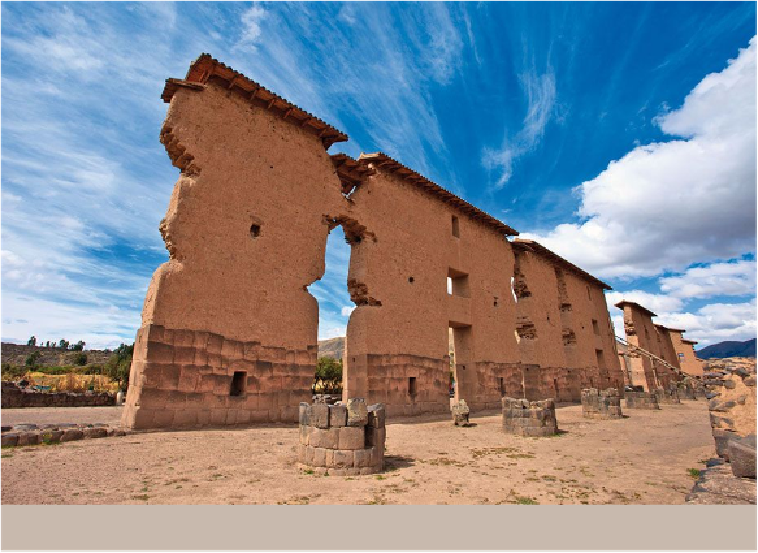Travel Reference
In-Depth Information
The Temple of Viracocha, Raqchi
KELLY CHENG TRAVEL PHOTOGRAPHY/GETTY IMAGES ©
In 1536 the fort was the site of one of the bitterest indigenous rebellions of the con-
quest. More than two years after Pizarro's entry into Cuzco, Manco Inca recaptured the
lightly guarded Sacsaywamán and used it as a base to lay siege to the conquistadors in
Cuzco. Manco was on the brink of defeating the Spaniards when a desperate last-ditch at-
tack by 50 Spanish cavalry succeeded in retaking Sacsaywamán and putting an end to the
uprising. Manco Inca survived, and retreated to Ollantaytambo, but most of his forces
were killed. Thousands of dead littered the site after the Incas' defeat, attracting swarms
of carrion-eating Andean condors. The tragedy was memorialized by the inclusion of
eight condors in Cuzco's coat of arms.
Opposite is the hill called
Rodadero
, with retaining walls, polished rocks and a finely
carved series of stone benches known as the Inca's Throne. Three towers once stood
above these walls. Only the foundations remain, but the 22m diameter of the largest,
Muyuc Marca
, gives an indication of how big they must have been. With its perfectly
fitted stone conduits, this tower was probably used as a huge water tank for the garrison.

